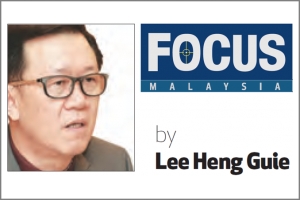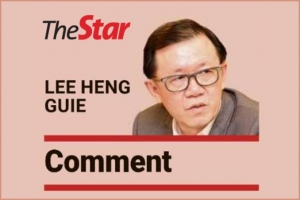Serc
2021Q3: Malaysia: Recovery, Resilience and Reform
For news coverage, please proceed to Activity page.
https://www.acccimserc.com/activities/activity-20211007
Executive Summary
A. World Economic Situation and Prospects
A CAREFUL BALANCING ACT
-
Still uneven global recovery. With the vaccinations continuing and the resumption of economic activities underway amid still lurking virus risk, the global economy is continued growing in 2H 2021 though the recovery remains uneven. The uneven pace of recovery is due to the large differences in vaccination rates between countries, and adding to the divergent recovery is the renewed spread of Delta strain has forced some countries to continue restrict activities and movements.
-
Global indicators point to easing activities ahead. With the favourable base effects in 1H 2021 diminishing, both manufacturing and service sectors have seen easing growth on resurgence of new cases worldwide in between 2Q and 3Q, impeded by sustained supply-side constraints. Supply bottlenecks are curbing the rate of output expansion amid continued consumer demand. Data showed that the supply chain disruptions for semiconductors are getting worse. While output or employment have recovered to pre-pandemic levels in some countries, but jobs and incomes still falling short of the levels. Strong pent-up demand is seen normalising.
The cost-driven and supply constraints-induced inflationary pressures and inflation risks are real, and if the wage demand rises faster (due to a recovery in labour market and labour shortages for some industries), reinforcing cost-induced and wage-demand inflation.
-
Beginning of the end of easy money. Inflation concerns amid the economic recovery have shifted the tone at the Federal Reserve and some central banks elsewhere. The Federal Reserve said it will likely begin reducing its monthly bond purchases as soon as November this year and signalled interest rate increases may follow more quickly than expected as the post pandemic recovery gains momentum. The unexpected large monetary moves could induce large global financial market volatility due to the capital reversals from the emerging markets.
-
Risks to the outlook are broadly balanced. We caution that the counter COVID-19 pandemic crisis fiscal stimulus and highly accommodative monetary policy must be carefully unwind to ensure a sustainable recovery and revitalizing of private demand. Pandemic-related uncertainty remains high. Amid higher vaccination rates but still at differing pace between countries, virus mutations will raise the risk of renewed lockdowns and temper the uneven recovery. The Fed’s tapering of asset purchases-induced tighter financial conditions or a larger step of interest rate normalization could undermine the recovery and increase private and public sector vulnerabilities.
B. Malaysia’s Economic and Financial Conditions
RECOVERY, RESILIENCE AND REFORM
- A cautious recovery in 2H 2021. After growing by an average annual growth of 7.1% yoy in 1H 2022 (+16.1% in 2Q and -0.5% in 1Q), the uneven recovery was tempered by renewed virus outbreaks, forcing the re-implementation of restricted lockdown beginning in mid-May as well as the Phase 1 under the National Recovery Plan (NRP) in early June, resulting in demand curtailment and supply disruptions. At this point of writing, more reopening of economic and social sectors is underway, subject to the Standard Operating Procedures (SOP).
-
Deeper economic scarring effects in 3Q. The shape of economic recovery depends critically on the second half-year performance, especially in the third quarter (Jul-Sep), which holds the key to a gradual resumption of economic and business activities as we move into the phases of more reopening of economic and social sectors. While the increasing level of vaccinations will support the normalcy of activities, the virus risk still lurking to threaten life and economy, and hence, continued pandemic mitigation and surveillance, including SOP are a must to ensure a sustained revival in economic and business conditions.
- A slew of key economic data (namely, exports, industrial output, wholesale and retail sales as well as banks’ loan demand) for the month of July-August has generally shown either a sharp pull back in growth or reverted a decline in consumer spending, reflecting the scarring economic effects from the MCO 3.0 restricted containment measures. The uptick in unemployment rate to 4.8% in July also weighed on consumer sentiment. Indications are that overall economic output, as measured by the GDP would be subdued or may decline in 3Q 2021 before recovering to positive decent positive growth in 4Q. We are still keeping our full-year 2021’s GDP growth estimate of 4.0% amid considerable uncertainties.
-
Headline inflation softens but real price pressure remains. Inflation, as measured by the Consumer Price Index eased further to a 5-month low of 2.0% yoy in August (2.2% in July and 4.2% in 2Q). The price moderation was broad-based: food, transport, housing, utilities etc. Inflation will stay relative stable in the remaining months of this year, taking the full-year estimate to 2.5% in 2021.
Though the CPI index measurement shows a slower rate of change due to “technical” base comparison, price levels for some goods and services have generally experienced increases due to rising cost of raw materials and supply disruptions. The cost pass-through effect on consumer inflation is unavoidable if cost increases have eaten into businesses’ profit margin. Producer Price Index (PPI) for local production has been increasing at double-digit rates in recent months (11.3% in August; 11.7% in July; 11.3% in 2Q), mainly pushed up by higher increases in prices paid for crude materials for further processing as well as intermediate materials, supplies and components.
-
Interest rates to stay unchanged at 1.75% until in 1H 2022. We expect Bank Negara Malaysia to keep the Overnight Policy Rate (OPR) at 1.75% until mid-2022 to support a firmer revival in domestic demand. The continued low interest rate complements the targeted fiscal support to secure a sustainable recovery path. The overall economic growth and inflation outlook as well as financial stability risk will be carefully assessed in a balancing act to time the starting of interest rates normalization.
The uncertainty of monetary path in some advanced economies and potential induced financial volatility in the financial and foreign exchange markets will also be one of the key aspects under the central bank’s monetary management.
- 2022 Budget - Revive and Recharge the economy. Policymakers must figure out how to fix a shattered economy, rebuild from the damage of the pandemic to become more resilient and to safeguard it against the next catastrophe. The 2022 Budget marks the second year of the 12th Malaysia Plan (2021-2025).
Please click the box below to download the full report and presentation slides:
Malaysia and CPTPP: Better be late than never!
Insight - Malaysia and CPTPP – better late than never
NIKKEI ASIA
THE EDGE




